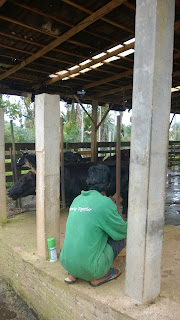|
Author: Tan KW | Latest post: Sat, 30 Nov 16:37
Stock pick challenge based on the discussion @http://klse.i3investor.com/blogs/kianweiaritcles/33790.jsp
| ||
Furniture design and making companies - kcchongnz
Author: Tan KW | Publish date: Tue, 5 Nov 09:41
Furniture design and making companies
The secret to successful investing is to figure out the value of something and then-pay a lot less.
Joel Greenblatt
[2000 years ago, there were not at many choices for professions as there are today. Sure there were farmers, politicians, merchants, artists, and guards. But you can bet back then, carpentry was a key profession. And when you look around your home or office today, what do you see? The results of carpentry: tables and cabinets everywhere.]
Think about it, furniture making business should be a viable business. Every household needs furniture, doesn’t it? Hence the business of furniture design, and making companies like Homeritz, Lii Hen and Latitude should be able to last a long time. Don’t you think so? The earnings of these furniture export companies have been doing very well recently with their stock prices moving northwards in tandem. But which of these three companies offers the most attractive investment for investors?
We will first look at the operational efficiencies of the three companies and see which is the best company.
Profitability and operation efficiencies
In terms of net profit margin (NPM), Homeritz excels by a wide margin of 15.9%, followed by Latitude and Lii Hen at approximately the same margin of 6.5% and 6.2% respectively.
The high profit margin of Homeritz in turn boasts up the return of equity (ROE) and return on invested capital (ROIC) of 20.6% and 29.9% respectively which are the highest among the companies as shown in Figure 1 and Table 1 below. Homeritz’s high ROE is also achieved with little financial leverage of just 1.2. These returns are way above its costs of capitals. Its cash return (Free Cash Flow/Invested Capital) is also remarkable at 29% (>>10%). FCF is also high at 16% of revenue (>>5%). Homeritz obviously beats the other two hands down. It must have been enhancing its shareholders value greatly with these operating numbers.
Figure 1: Profit Margin, Return of equity and invested capital
Table 1: Operating efficiencies |
Homeriz
|
Lii Hen
|
Latitude
|
| Net profit margin |
15.9%
|
6.2%
|
6.5%
|
| Asset turnover |
1.1
|
1.8
|
1.1
|
| ROA |
17.3%
|
10.8%
|
7.1%
|
| Leverage |
1.2
|
1.5
|
1.6
|
| ROE |
20.6%
|
15.9%
|
11.6%
|
| ROIC |
29.9%
|
18.0%
|
13.3%
|
Lii Hen follows with respectable ROE and ROIC at 15.9% and 18% respectively (Table 1). Latitude comes in last with ROE and ROIC of 11.6% and 13.3% respectively, which are still good as they are above the costs of capital.
Latitude’s cash flow is however, much better than that of Lii Hen with FCF 10% and 18% compared to Lii Hen’s 2% and 6% of its revenue and invested capital respectively.
Ranking in operation efficiencies
With the past year profitability, efficiencies and cash flow of the companies, I who is one emphasize cash flow very much would rank the companies from the best to the worst as follows:
- Homeritz
- Latitude
- Lii Hen
Market Valuation
Homeritz is indeed given the highest valuation with a PE ratio of 7.0, followed by Latitude and Lii Hen at 5.3 and 4.2 respectively. This appears to be as expected from their performance.
| Table 2: Market Valuation | |||||||
| xxxxxxx |
Homeriz
|
Lii Hen
|
Latitude
| ||||
| PE |
7.0
|
4.2
|
5.3
| ||||
| EV/Ebit |
3.9
|
2.9
|
5.1
| ||||
| EV/FCF |
4.6
|
11.6
|
4.3
| ||||
However a better market valuation should be based on enterprise value of the whole firm, rather than just the equity. This is because some firms have relatively lower debt, or larger amount of excess cash such as Homeritz with 40% of its net asset in hard cash.
Referring back to Table 2 above, It appears that Lii Hen has the lowest enterprise value in relation to its Ebit of just 2.9 times. However due to Lii Hen’s poorer cash flow, its EV in relation to FCF is the highest at 11.6 times. Hence in my opinion, Homeritz has the most attractive valuation as its enterprise values are low at 3.9 and 4.6 times respectively of its Ebit and FCF.
Taken all into considerations, my personal ranking of the market valuations is as follow:
- Homeritz
- Latitude
- Lii Hen
KC Chong (3/11/13)





















